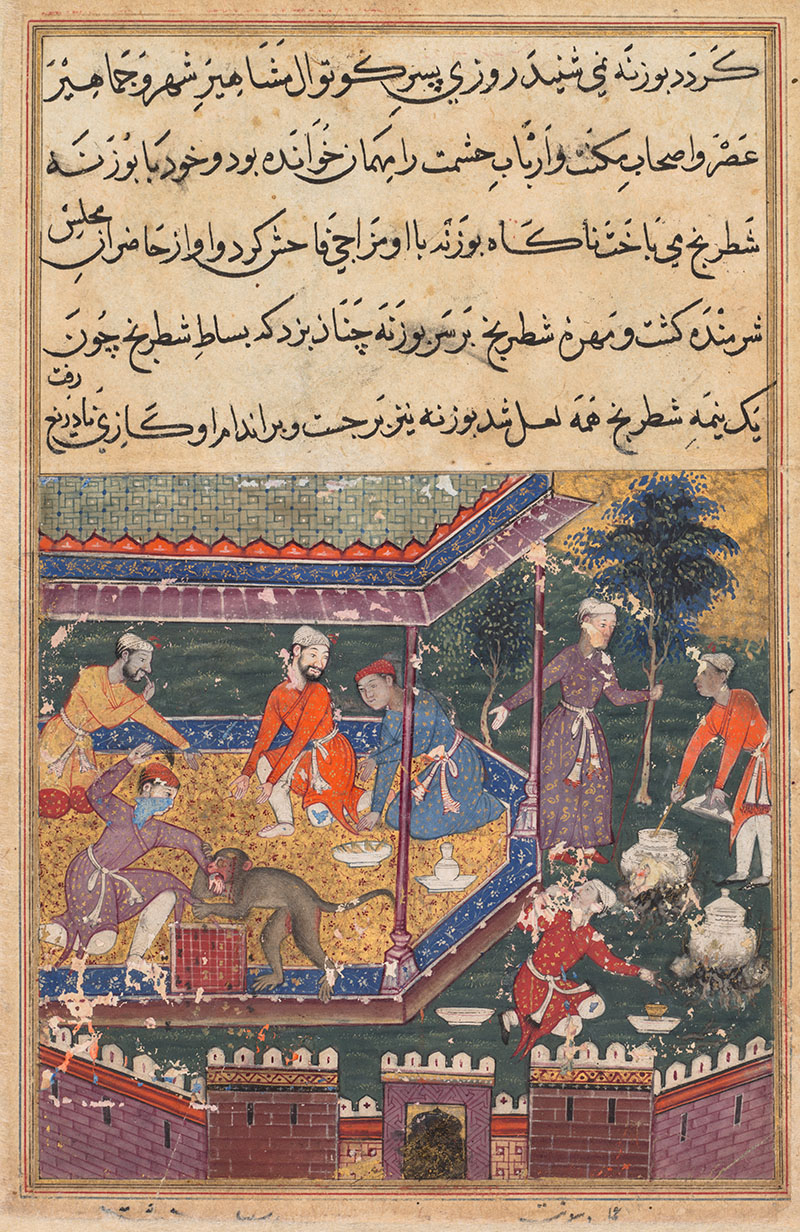Considered one of the best-known painters of Mughal miniatures in the court of emperor Akbar I, Daswanth (also referred to as Dasvanth) is best known for his contributions as lead designer and artist on influential works such as Razmnama (a Persian translation of the Mahabharata), Hamzanama (Book of Hamza, c. 1558–73), Tutinama (Book of the Parrot) and Timurnama (Book of Timur, c. 1580). The son of a palanquin-bearer, Daswanth began drawing on the walls of the workshop he was employed in. His drawings caught the eye of Akbar who invited him to be a part of his court. Daswanth then became a disciple of the master Persian painter, Khwāja Abd al-Ṣamad.
Daswanth’s earliest works were the pages he illustrated in the Tutinama manuscript, the only known manuscript he worked on unassisted. The characteristic feature of this work is the free application of wet pigment, which resembled European techniques of oil or watercolour paintings. Daswanth’s next major contribution was to the Hamzanama, where nineteen paintings were attributed to the artist, under the supervision of Abd al-Ṣamad. He also worked on a single illustration within the Tarikh-i-khandan-i-Timuriya, or Timurnama, once again under the supervision of his teacher; this is likely the project that led to him being entrusted with major roles in subsequent manuscripts.
The major portion of Dawanth’s identified work is found in the Razmnama, executed between 1582 and 1586, in which he drew thirty of the hundred and seventy-six illustrations. Had he not died before the completion of the project, he would have been its most prolific painter. Despite this, the Razmnama features Daswanth’s style in its most representative forms. In one of his paintings, the ghoulish Kalratri rises out of the dead body of Shikandin and drinks the blood of those killed in the Pandava camp. The demonic creature is depicted garlanded with flayed animals and a necklace of freshly severed heads, sipping from a bowl of blood, against a background that is completely blank, and hence offers no sense of the space. Compositions such as these are characteristic of Daswanth, who created frenzied and chaotic arrangements which rarely focussed on the relationship of space and depth, instead focusing on depicting vivid scenes and moods. These features are also what distinguished Daswanth from the more traditional style of his contemporary, Basawan.
In 1584, Daswanth wounded himself with a dagger and ended his life.







